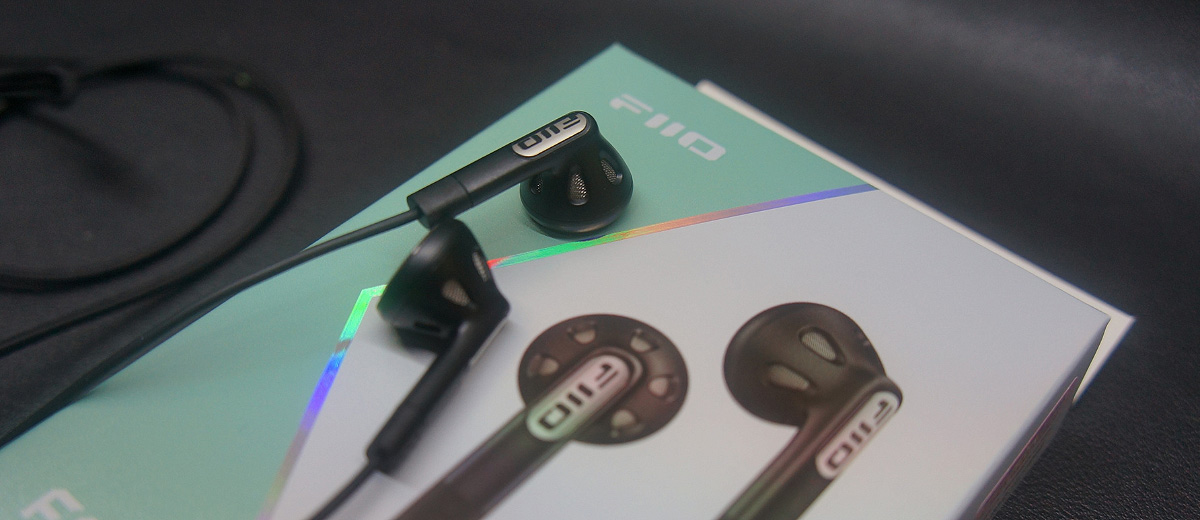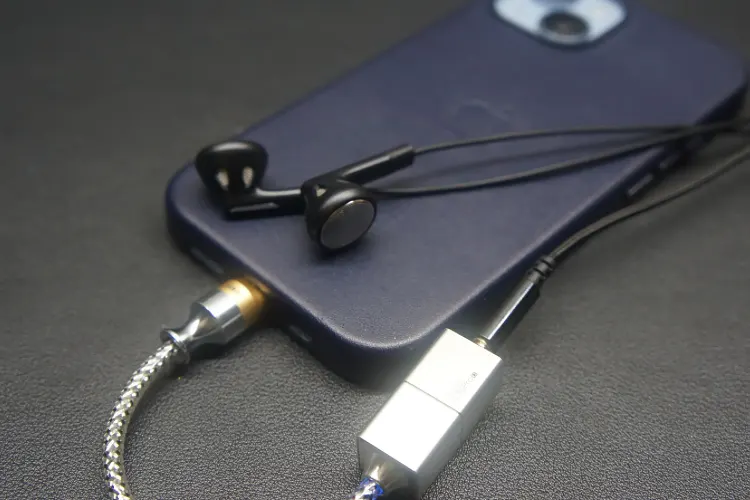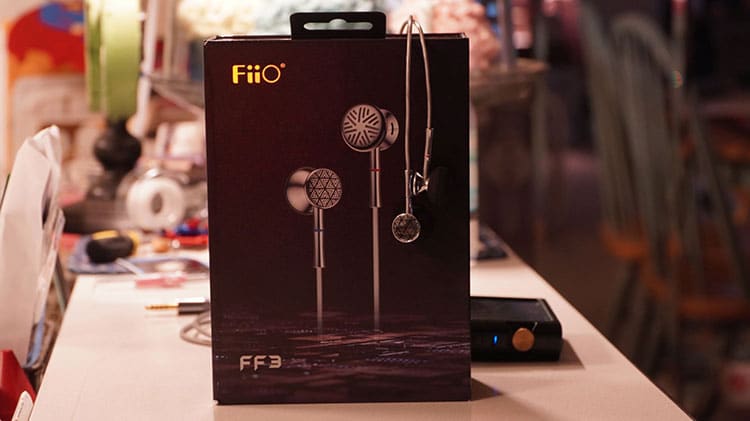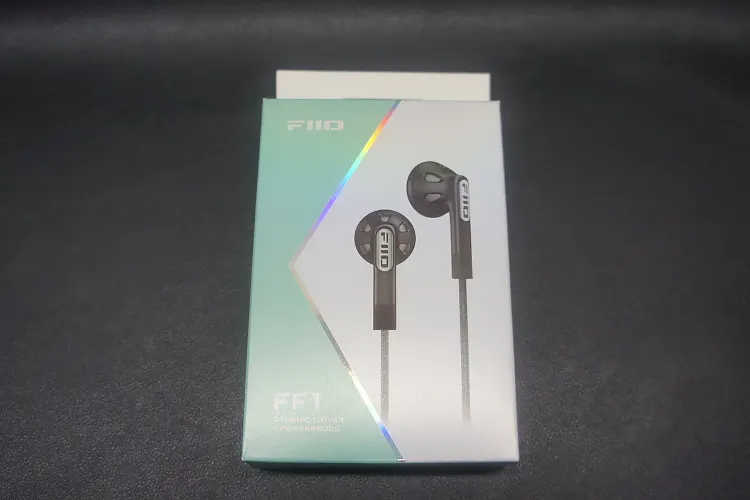Synergy
Efficiency
With an impedance of 45Ω and a sensitivity of 106 dB/mW, it can be sufficiently driven by a dongle DAC or a laptop, but I observed better dynamics when running them off desktop quality amplification such as the FiiO K11.
Based on my testing, the dongle DAC that came with the earbuds was perfectly sufficient for driving the FF1 to adequate listening levels.
The same goes for my ddHiFi TC35Pro Eye2 lightning dongle, but I feel like the staging and dynamics of the FF1 were maximized when I connected them to my desktop setup.
Pairings
In my testing, I found that the FF1 paired well with the included dongle DAC in terms of day-to-day usability. Since my phone is a lightning-based iPhone, I found the ddHiFi TC35Pro 2 to be a good pairing as well, offering a bit more power which did boost the staging performance a bit.
It was just quite unfortunate that once again, the dongle DAC FiiO included did not support microphone pass-through.
Despite not being the most practical combination, I enjoyed how the FiiO K11 one high gain was able to maximize the dynamics and staging performance of the earbuds.
Select Comparisons
FiiO FF3
Technical
Both the FF3 and the FF1 make use of a single 14.2mm PU+Beryllium-plated dynamic driver, both at 45 ohms as well. The FF1 has a slightly higher sensitivity of 106db/MW compared to the 105db/mW sensitivity of the FF3, making the FF1 easier to drive in comparison.
Both earbuds come with detachable cables, with the FF1’s cable coming with an in-line microphone, something that is missing with the FF3. On the other hand, the FF3’s cable comes with detachable terminations, allowing the user to swap between 3.5mm SE and 4.4mm balanced.
Design
The FF1 is constructed out of a black plastic shell reminiscent of the earbuds included with portable CD players and MP3 players from the early 2000s. This gives it a lightweight build with a fairly uninspired design.
On the other hand, the FF3 has a beautifully built stainless-steel shell with a thinner stem. This gives it a more premium look, especially with the subtle tasteful geometric patterns on the faceplate of the earbuds.
This, however, gives it a significantly heavier build, making it less comfortable to wear. The FF3 weighs 31g without the cable, compared to the 3.2g of the FF1.
Performance
The FF1 has a neutral sound signature with a slight V-shaped tonality whilst the FF3 has a more out-and-out engaging V-shaped tonality.
The FF3’s V-shaped sound signature makes it have more bass quantity than the FF1, especially in the sub-bass region, where it has more punch and slam. This did make the FF3 sound more exciting in modern hip-hop tracks, with bass performance comparable to most IEMs.
The midrange performance of the FF3 was worse across the board. The mid-range performance of the FF1 midrange has better tonal balance and presentation.
When listening to more acoustic mixes, I was shocked at how little of the string instruments were present when listening to the FF3. In such tracks, I surprisingly consistently preferred the FF1 over the FF3.
The treble of the FF3 is more present and detailed than the FF3’s treble. The FF1’s treble has more sparkle, air, and extension, but the FF1 is quite close still.
The resolving capabilities of the FF3 are better than that of the FF1 across the board, making each instrument easily identifiable from one another.
Venture Electronics ZEN LL
Technical
The FiiO FF1 makes use of a single 14.2mm PU+Beryllium-plated dynamic driver with an impedance of 45Ω. The Venture Electronics ZEN LL makes use of a single dynamic driver with a much higher impedance of 150Ω.
The ZEN does have a higher sensitivity of around 109 dB/Mw compared to the 106db/mw of the FF1, but in practice, the ZEN LL was still harder to drive.
Unlike the FF1, the ZEN LL comes with an attached cable, which is still of good quality, but I still much prefer the detachable cable of the FF1.
Design
The FF1 is constructed out of a black plastic shell reminiscent of the earbuds included with portable CD players and MP3 players from the early 2000s. This gives it a lightweight build with a fairly uninspired design.
On the other hand, the ZEN LL has a much sleeker design, appearing less bulky and more comfortable. The ZEN LL and FF1 have the same shell diameter of 16.2mm, but the ZEN’s stem was much thinner.
This made the Zen LL significantly more comfortable than the FF1. The FF1 is by no means uncomfortable, but the FF1 is simply in a class of its own. I can honestly see myself wearing the ZEN LL while falling asleep.
Performance
The FF1 has a neutral sound signature with a slight V-shaped tonality whilst the ZEN LL has a more neutral and flat sound signature.
In terms of bass quantity, the FF1’s execution is more evident. Bass hits have more rumble, whilst also adding more warmth to the overall tonality of tracks.
Compared to the ZEN LL, this increased level of bass does muddy up the overall tonality a little bit, but this was a big improvement compared to the anemic bass signature of the ZEN LL. Up until I listened to the FF3 and FF1, I didn’t realize that buds could even produce bass like this.
The mids on the ZEN LL are more pronounced than that of the FF1, however, I noticed that the ZEN LL had a shoutier sound signature, especially for female vocals. Because of its neutral sound signature, this shoutiness stood out, and I found myself gravitating to the more luscious mids of the FF1.
Because of its more V-shaped sound signature, highs were more evident on the FF1, whose treble was better across the board. The FF1’s highs were better resolving, more exciting, and more detailed than those of the ZEN LL.
Our Verdict
The FiiO FF1 provides good value with its ability to produce IEM levels of bass using an earbud-style design, whilst maintaining reasonable comfort. The USB-C Dongle DAC included makes its $20 price point a low-risk buy for earbud enthusiasts.
In my eyes, this is a no-brainer. As an audiophile whose experience lies more with IEMs and headphones instead of earbuds, listening to the FF1 was a revelation and illustrated how far earbuds have come.
Whether or not you’re a curious audiophile willing to spend under 20 USD to try out a new form factor, or an owner of a brand-new iPhone 15 looking for some backup earphones, the FF1 is a pocket change choice to hear a decent earbuds performance.
FiiO FF1 Technical Specifications
- Driver Type: 14.2mm dynamic driver
- Plug: 3.5mm single-ended
- Impedance: 45Ω
- Sensitivity: 106 dB





